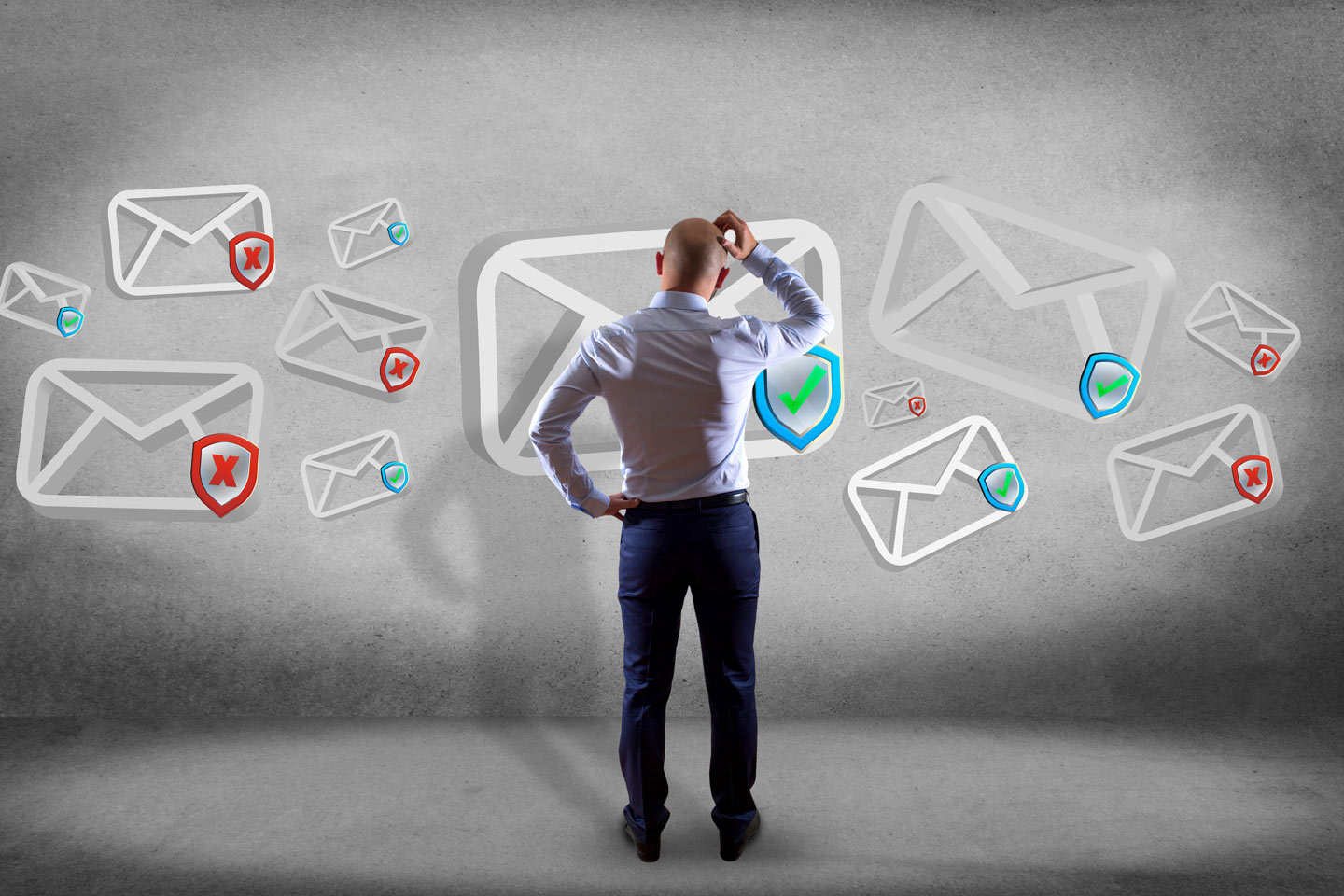
Have you ever been the target of a phishing scam? It’s something that can affect anyone, and it’s important to know what it is and how to avoid becoming a victim. We’re here today with an expert on this topic to help us make sense of these scams and protect ourselves in the future – so without further ado, let’s dive into ‘What is Phishing and How Can You Avoid It?’
In case you didn’t already know, phishing refers to malicious attempts by hackers to get access to your personal information or financial accounts. They’ll use any means necessary, from cleverly disguised emails to fake websites – all for their own gain! It’s essential we stay up-to-date on these tactics so we don’t fall prey to them.
So what advice does our expert have when it comes to staying safe online? Well they’ve got some great tips on recognizing suspicious activity and avoiding falling victim to a phishing attack. Tune in later as we hear more about how we can be proactive in protecting ourselves against scammers!
Definition Of Phishing
Well, let’s start with the basics. What is phishing? Phishing is a type of cybercrime where hackers send out malicious emails and links to unsuspecting victims in an attempt to steal their personal information or money. It can be disguised as coming from legitimate sources like banks, government agencies, or large companies. So how does one avoid it?
Let me tell ya: first off, don’t open any suspicious emails or click on unknown links that you think might be malicious. If something looks fishy – pun intended – delete it immediately! Secondly, never give out your personal info such as passwords and credit card numbers via email. And lastly, make sure all your software is up-to-date and use anti-virus programs regularly to protect yourself online.
Now that we’ve discussed what phishing is and how to avoid it, let’s move on to examining some common sources of these scams.
Sources Of Phishing
Alright, we’re moving on to the next topic: sources of phishing. Y’all know what it is by now — malicious hackers trying to get your personal information and stuff like that. But where do these bad actors come from? Well, a lot of times they’ll be lurking in emails and texts you get, pretending to be someone else or some kind of organization. Other places they hide are online ads and search results too. So if something looks off with an email address, subject line, URL link, etc., don’t click it! That’s usually how these cybercriminals can start working their way into your life.
The other thing about phishing training is that not all attacks come from strangers; sometimes friends and family unknowingly pass along scams as well. Be sure to double check every message before you act on it – no matter who sent it! And remember, when in doubt throw it out (of your inbox).
Types Of Phishing
Alright, so here’s the next thing. Let’s talk about types of phishing. There are a few different kinds out there: spear phishing and whaling are two examples. Spear phishing is when scammers target specific individuals or organizations with their emails – they may even use personal information to make it look convincing! Whaling attacks target high-level executives in big companies for sensitive data like credit card details. Both can be dangerous if you don’t know what to look for.
Now let’s move on to techniques used in phishing.
Techniques Used In Phishing
So, let’s talk about technique. What sneaky methods does phishing use to steal your information? Well, here are four of the most common approaches:
• Impersonating a trustworthy source like banks or government agencies in emails or websites;
• Creating forms that look legitimate but actually collect sensitive data like passwords;
• Attaching malicious files to emails or texts; and
• Sending links to fake websites.
Now you see why it’s so important to be aware of what phishing is and how it works. You should always double-check any communication before clicking on anything, even if it looks valid – because it could very well be an attack! So stay vigilant out there – ’cause the last thing you want is for someone trolling for personal details using these techniques.
Signs You May Be A Target Of Phishing
Alright, so we’ve been talking about phishing and how to avoid it. Let’s move on now to the signs you may be a target of phishing. It’s important to know what these are if you want to stay safe online.
Firstly, there are some key giveaways that can alert you when something isn’t quite right. Most often, scammers send fake emails trying to get your personal information or credit card details – they usually come from an email address that looks legit but has a few extra letters or words attached at the end of it. Additionally, look out for any typos in the message itself; real companies wouldn’t make those kinds of mistakes. Finally, check the URL carefully before clicking through as hackers will sometimes create pages with URLs very similar to legitimate websites in order to trick people into entering their data.
These are just a few things to keep in mind if you suspect someone might be trying scam you via phishing. Knowing these red flags is essential if you want protect yourself against cyber criminals! Now let’s take a look at what steps should take next if believe have been targeted by phishing…
Steps To Take If You Believe You Are Targeted By Phishing
Alright, number 6 on the list is probably the most important one. What do you need to do if you think someone’s trying to phish ya? First off all, don’t panic – it happens more often than you’d expect these days. But there are a few steps you can take to make sure everything’s alright.
First up, get in touch with your bank or credit card company right away and tell ’em what’s going on. They’ll wanna know as much information about the email or message as possible so they can investigate further. Next, check your accounts and make sure nothing looks out of whack. If something doesn’t look quite right, notify them again immediately – that way any potential damage will be minimized. Finally, change those passwords! Make sure all of them are strong and unique for extra security; this may seem like a hassle but trust me when I say it’s worth it in the long run.
So there ya have it: a few tips for handling a potentially shady situation. Now let’s talk about how we can prevent this from happening in the first place.
Tips For Avoiding Phishing
Alright, let’s get to number 7 on our list: tips for avoiding phishing. Here are a few things you can do to protect yourself from this malicious activity:
• Stay educated about the latest scams and techniques used by cybercriminals – use only official websites of banks or other institutions when performing financial transactions online; avoid clicking suspicious links in emails and text messages.
• Enable multi-factor authentication whenever possible, as it will help prevent your credentials from being stolen.
• Always look out for signs that an email is not legitimate, such as typos, poor grammar, requests for personal information like credit card numbers, etc.
• Use strong passwords and update them regularly so they don’t become vulnerable to attack.
• Install security software on all devices connected to the internet – anti-virus software should be kept up-to-date at all times.
These simple steps can go a long way towards protecting you from becoming a victim of phishing attacks! But what’s the real impact of these attempts? Let’s take a closer look.
The Impact Of Phishing
Well, folks it’s time to talk about the impact of phishing. It might sound like a fun word game but this is serious stuff. Phishing can have some seriously negative effects if you don’t take precautions – here are just a few. First off, your personal information and data could be stolen by criminals who use phishing tactics. They may even try to get access to bank accounts or credit cards using this method. Secondly, cyber criminals can create malicious websites that look legitimate in order to trick people into giving away their info. This could lead to identity theft or fraud which would put you at risk financially and emotionally.
Lastly, once your data has been compromised it can be extremely difficult (if not impossible) to track down the perpetrator and reclaim your information. So it’s clear that phishing should never be taken lightly; there are real risks associated with falling prey to these scams and they shouldn’t be ignored! Remember: always double-check URLs before entering any sensitive info online and keep an eye out for suspicious emails or messages that seem too good to be true – chances are they probably are!
Conclusion
Well, folks, we’ve been talking about phishing and how to avoid it. In short: Phishing is a way for scammers to get personal information from unsuspecting victims. It can come in the form of emails, text messages, or even phone calls – all designed to trick you into giving up your data.
What I want you to take away from this is that if something seems too good to be true or looks suspicious, it probably is! Don’t trust any email asking for money or logins; instead, delete them right away. Additionally, make sure your anti-virus software is up to date so you don’t accidentally let malicious links slip by. And lastly, always double check before clicking on anything – especially links sent through email.
So remember: be careful online and never give out sensitive information without being absolutely certain who you are dealing with. That’s all I have for now – stay safe everyone!







